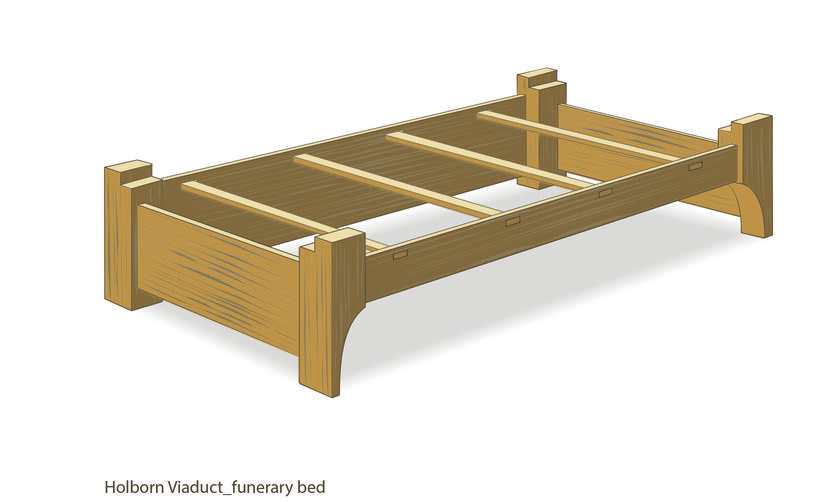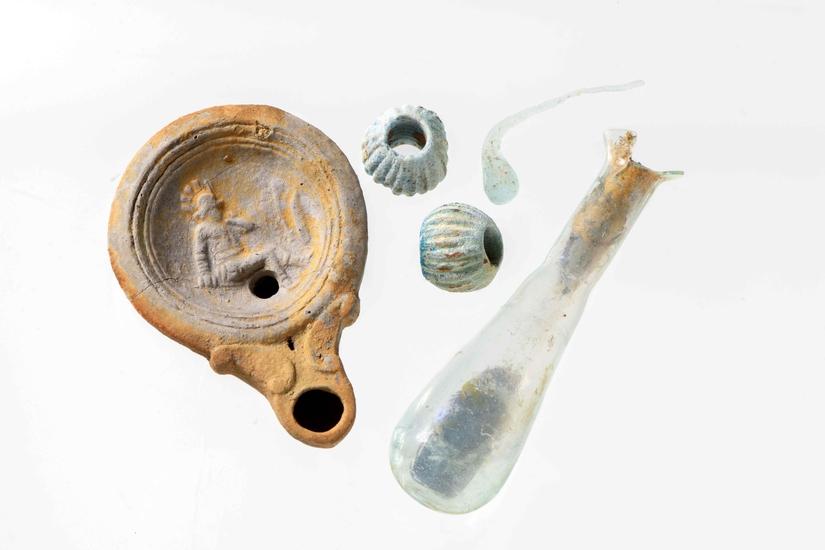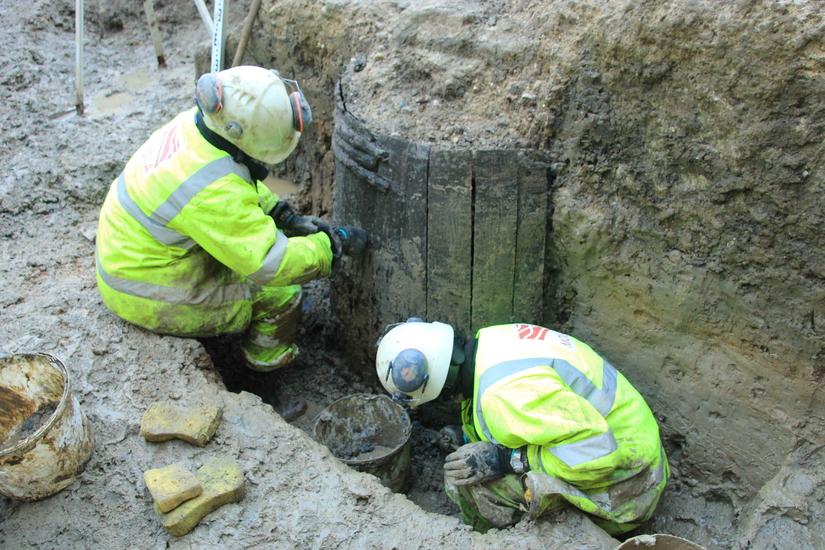Excavations at Holborn Viaduct reveal complete Roman funerary bed
We’ve been excavating near Holborn Viaduct in London, ahead of the site’s transformation into bespoke office space for global law firm Hogan Lovells.
Our excavations, carried out on behalf of Royal London Asset Management Property have revealed 2000 years of history on the site, including some exciting discoveries.
What have we found?
An incredibly rare Roman funerary bed – this is the first complete funerary bed found in Britain! Made from high-quality oak, the bed has carved feet, and joints fixed with small wooden pegs. It was taken apart before being placed within the grave but may have been used to carry the individual to the burial. We think it was probably intended as a grave good for use in the afterlife. Tombstones from across the Roman empire show carvings of the deceased reclining on a couch or bed and eating as if they were alive.

And that’s not all...
As the funerary bed might suggest, this site was used as a cemetery during the Roman period (AD 43-410). Alongside the skeletal remains, we’ve found personal objects such as a glass vial and high-status jewellery with jet and amber beads. We also uncovered a decorated lamp. The design on the lamp is an image of a defeated gladiator, and we think it dates to the very early Roman period in Britain, between c. AD 48-80!

Heather Knight, our Project Officer explains:
“We know the Romans buried their dead alongside roads, outside of urban centres. So, it was no great surprise to discover burials at this site, which during the Roman period would have been located 170m west of the city walls and next to the major Roman road of Watling Street. However, the levels of preservation we’ve encountered – and particularly uncovering such a vast array of wooden finds – has really blown us away.”
It’s very unusual to discover wooden objects on archaeological sites, but because this site is on the banks of the River Fleet, they have been preserved in the damp mud. As well as the Roman funerary bed, we’ve found some exciting wooden objects from the site’s later life!

Our excavations have also revealed there was another cemetery on the site during the 16th century. Which may be related to nearby St Sepulchre's church. After the devastation of the Great Fire of London in 1666, the site saw new life with the construction of houses, shops, and a pub, which were eventually replaced by Victorian warehouses.
What happens next?
We’re continuing researching and analysing all these amazing finds. This will reveal many new details about the people who lived, worked, and were buried here over the past 2000 years, and we look forward to sharing more with you in the future. And we’re still excavating on site, so who knows what else will be revealed!